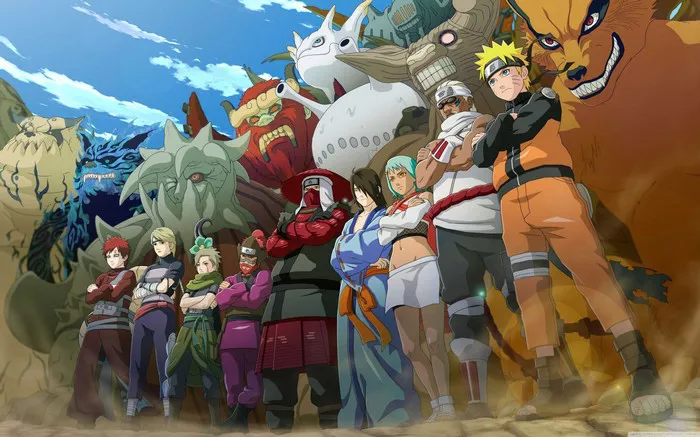In the vast landscape of anime and manga, few series have captured the hearts and imaginations of fans quite like Naruto and One Piece. These iconic franchises have garnered widespread acclaim, boasting massive fan bases, extensive media adaptations, and a cultural impact that extends far beyond their respective mediums. Yet, the question remains: Is Naruto more popular than One Piece? In this comprehensive analysis, we delve into the metrics, milestones, and cultural significance of both series to unravel the intricacies of their popularity and determine which reigns supreme in the realm of anime and manga fandom.
Origins and Evolution: Naruto and One Piece
Before delving into the intricacies of their popularity, it’s crucial to understand the origins and evolution of Naruto and One Piece. Created by Masashi Kishimoto, Naruto follows the journey of Naruto Uzumaki, a young ninja with dreams of becoming the strongest ninja and earning the respect of his village. With its blend of action, adventure, and coming-of-age themes, Naruto captivated audiences worldwide, becoming one of the best-selling manga series of all time and spawning an acclaimed anime adaptation, movies, video games, and a vast array of merchandise.
On the other hand, One Piece, created by Eiichiro Oda, transports audiences to a world of high-seas adventure and pirate plunder, following the exploits of Monkey D. Luffy and his crew of Straw Hat Pirates as they search for the legendary One Piece treasure. Boasting intricate world-building, dynamic characters, and epic battles, One Piece has become a cultural phenomenon, holding the title of the best-selling manga series in history and inspiring a multimedia empire encompassing anime, films, video games, and more.
Global Reach: Penetrating International Markets
When assessing the popularity of Naruto and One Piece, one must consider their reach and reception on a global scale. Both series have achieved significant success beyond their native Japan, garnering dedicated fan bases in regions across the world and transcending cultural and linguistic barriers.
Naruto’s popularity soared in the early 2000s with the international success of its anime adaptation, which aired in numerous countries and introduced audiences to the captivating world of ninjas, jutsu, and ninja villages. The series’ relatable themes of friendship, perseverance, and redemption resonated with viewers of all ages, cementing Naruto’s status as a global phenomenon and paving the way for its continued success in the years to come.
Similarly, One Piece’s global impact cannot be overstated, with the series amassing a massive following in countries ranging from the United States and Europe to Latin America and Southeast Asia. Despite initial localization challenges and differences in cultural context, One Piece’s universal themes of friendship, adventure, and freedom have endeared it to audiences around the world, solidifying its status as one of the most beloved and enduring franchises in anime and manga history.
Merchandise and Media Dominance
Another metric for assessing the popularity of Naruto and One Piece lies in their merchandising and media dominance. Both series have spawned a vast array of merchandise, including action figures, apparel, collectibles, and more, catering to fans’ desires to express their love for their favorite characters and moments.
Naruto’s merchandise empire encompasses everything from Naruto-themed clothing and accessories to video games, trading cards, and even ramen noodles inspired by the series. The brand’s ubiquity extends beyond traditional merchandise, with Naruto-themed attractions at theme parks, collaborations with major brands, and a pervasive presence in popular culture.
Likewise, One Piece boasts an extensive merchandise line, with everything from Straw Hat Pirate figurines and apparel to themed cafes, theme park attractions, and even a One Piece-themed restaurant cruise. The series’ enduring popularity has fueled a multimedia empire encompassing anime films, video games, live-action adaptations, and more, ensuring its continued dominance in the realm of entertainment.
Cultural Impact and Legacy
Beyond their commercial success, Naruto and One Piece have left an indelible mark on popular culture, inspiring countless fans and influencing subsequent generations of creators. Both series have contributed to the proliferation of anime and manga fandom worldwide, sparking discussions, debates, and celebrations of their characters, themes, and storylines.
Naruto’s impact on popular culture is evident in its widespread recognition and influence across various mediums, including television, film, literature, and even politics. The series’ iconic characters, such as Naruto, Sasuke, and Sakura, have become cultural icons, inspiring fan art, cosplay, and even academic discourse on topics ranging from philosophy to psychology.
Similarly, One Piece’s cultural impact is undeniable, with the series leaving an indelible imprint on the collective consciousness of fans around the world. From its memorable characters and story arcs to its exploration of complex themes such as freedom, justice, and the nature of power, One Piece has sparked discussions, theories, and analyses that continue to captivate audiences to this day.
Conclusion: The Power of Two Titans
In conclusion, the debate over whether Naruto is more popular than One Piece is a nuanced and multifaceted one that defies easy categorization. Both series have achieved unprecedented success and acclaim, captivating audiences with their compelling characters, immersive worlds, and timeless themes.
While Naruto’s early international success and widespread recognition have earned it a place in the annals of anime and manga history, One Piece’s enduring popularity and cultural impact cannot be overlooked. As two titans of the industry, Naruto and One Piece stand as pillars of the anime and manga landscape, each leaving an indelible legacy that continues to inspire and entertain fans around the world.
Ultimately, whether one considers Naruto or One Piece to be more popular is a matter of personal preference and perspective. What remains undeniable is the profound impact that both series have had on generations of fans, cementing their status as enduring classics in the pantheon of anime and manga greatness.

